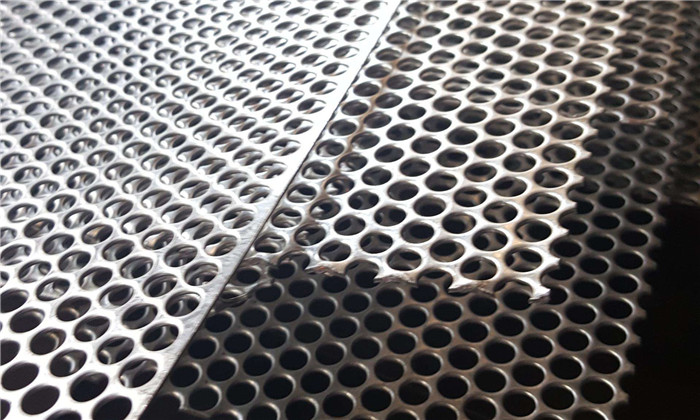Reasons for Perforated Sheet Size Error and Whether It Can Be Avoided
Source:www.cn-psp.cnAuthor:河北森驰公司 Last updated:2025-03-04 09:23:05 Browse:
Today, a customer sent a perforated sheet drawing and requested a quote. The drawing specifies the external dimensions to an accuracy of 0.1mm. However, our punching technician pointed out that the actual error is usually around 1mm. So, what causes the size error in perforated sheets? Can it be avoided?

perforated sheet
Errors During the Cutting Process
Perforated sheet material is usually purchased in large rolls and then cut into various sizes. The cutting process is typically done using a shearing machine, where manual adjustments are made to the size. Because of this, there is often an inherent error in the actual dimensions, especially for thicker materials.
Due to human adjustments and manual operations, size errors are almost unavoidable. Moreover, the thicker the sheet, the more cutting force is required, and even a slight deviation can result in uneven thickness on both sides of the sheet, affecting the final size accuracy.
Material Deformation During Punching
When perforated sheets are punched on a CNC punching machine, the metal sheet experiences an impact force that may cause it to bend or deform. Although the sheet is usually leveled after punching, it is difficult to achieve absolute flatness, especially with thicker perforated sheets. The leveling effect is limited, leading to size deviations.
Thicker perforated sheets are more affected by stress during punching, making it harder to avoid dimensional errors.
Relationship Between Size Error and Material Thickness
In summary, the size error of perforated sheets is closely related to the thickness of the material. Generally speaking, the error typically stays within 1-2mm, and the thinner the sheet, the smaller the error, while thicker sheets will have greater error.
Thinner sheets are subjected to less force during cutting and punching, so their size remains more precise. However, thicker sheets require more force to process, resulting in a larger error.
Can the Error Be Avoided?
Although the error itself cannot be completely eliminated, it can be minimized by improving the processes and equipment. For orders with high precision requirements, more accurate cutting methods, advanced CNC punching technology, and careful leveling treatments can reduce the error. However, in actual production, completely eliminating error is nearly impossible; it can only be controlled within an acceptable range to meet the customer's needs.
In conclusion, the size error of perforated sheets mainly comes from deformation during cutting and punching. The error is directly related to the material thickness. For orders with high precision, customers need to understand these natural errors in the manufacturing process and reach a consensus with the manufacturer.
